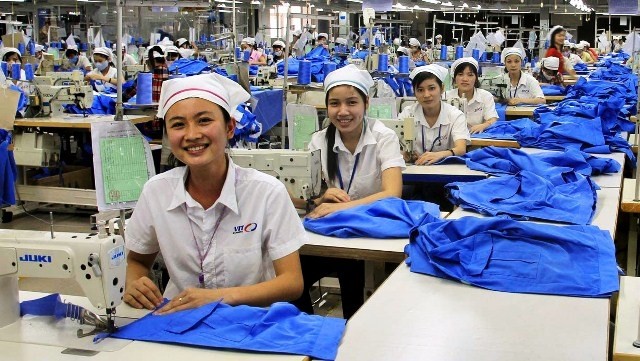In 2015, though the sector only recorded a growth of more than 10%, total textile exports still reached US$27.5 billion. In 2016, the sector targeted a growth of about 10-15%, with exports expected to reach US$31 billion.
However, market volatility and lower consumer demand around the world has made Vietnam’s textile exports amount to a mere US$28.3 billion, an increase of nearly US$1.5 billion, corresponding with a growth of nearly 5% compared to 2015 – the lowest growth rate since 2008.
Not only that, due to increasingly fierce competition, domestic textile enterprises have faced a range of difficulties in expanding markets and seeking customers, even facing the risk of declining orders due to losing competitive advantages.
According to experts, previously apparel orders constantly poured into Vietnam thanks to its cheap labour competitiveness, however, it is no longer an advantage as labour costs have increased. Inevitably, orders have moved to the lower-cost countries, such as Laos, Cambodia and Myanmar.
One of the major bottlenecks that Vietnam's garment sector is always seeking measures to address is how to get rid of the current situation of out-sourcing with low added value, while avoiding a dependence on imported raw materials (the country still has to import more than 80% of raw materials) in order to control prices and increase competitiveness.
Although the Vietnam National Textile and Garment Group and several major enterprises have invested in spinning, weaving, dyeing and finishing chains, it does not seem enough to meet the needs of thousands of companies specialising in garment exports. Meanwhile, companies without resources have turned to accepting out-source orders with low cost and quick payback.
 |
Revising production methods is among measures helping textile enterprises to deal with current difficulties.
On the other hand, it is also difficult to raise the textile industry to a higher level due to competitive factors in labour skills, modern technologies and equipment and diversified products.
Due to limited resources, most domestic companies choose to gradually invest each year. This situation is in contrast compared to FDI as they represent less than 25% of the nearly 7,000 textile enterprises nationwide but account for 70% of the total export capacity. This shows that the overwhelming advantages of foreign companies over domestic enterprises will only continue to grow if reasonable policies and development direction are not soon formed.
According to the Vietnam Textile and Apparel Association, 2016 is an extremely difficult year for the country's textile industry, with the lowest growth rate since 2008 (the year that Vietnam's garment recorded no export turnover growth due to the global economic crisis) so far.
By 2018, Vietnam's garment industry has been forecast to face many challenges, especially in regards to small and medium-sized enterprises facing the risk of closing down due to poor competitiveness and extremely difficult production conditions.
Many customers have been moving their orders to Cambodia, Myanmar and Laos, countries with tax incentives to export goods to Europe and the US – the two largest export markets for Vietnam’s textile and garment industry.
Therefore, companies need to change production methods towards ODM and OBM models, while reducing costs, increasing productivity, investing in technologies and diversifying products.
The Government and concerned ministries should promote administrative reform and provide reasonable support policies regarding capital, infrastructure, employment, income and health insurance to reassure businesses.
















